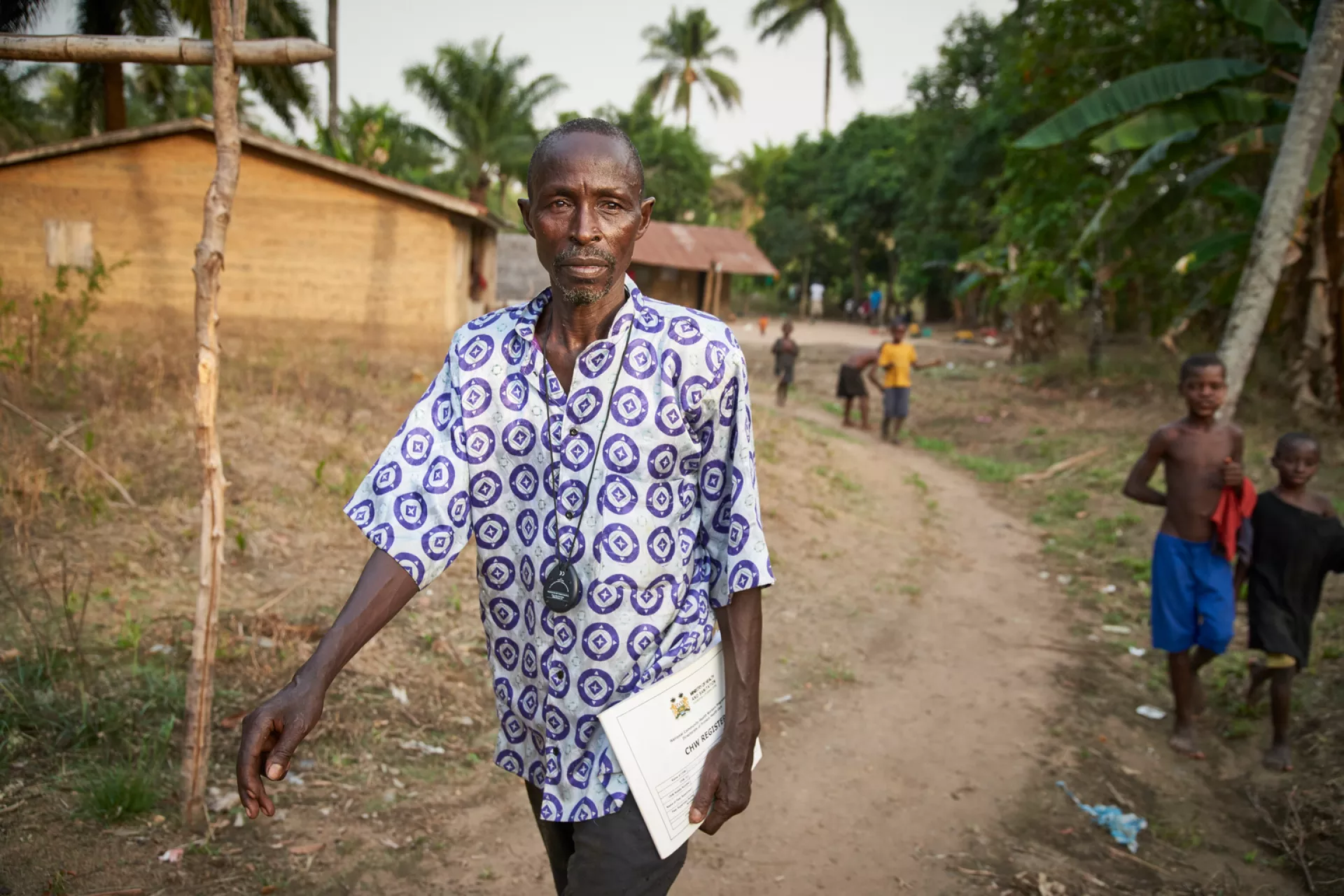Mapping Community Health Workers with Satellites
Quick access to new data helps Sierra Leone understand their health workforce

With about only 200 practicing medical doctors in Sierra Leone, most of the country’s more than six million citizens don’t often come into close contact with a physician. Instead, the first point of contact for many, particularly in remote rural communities, are the country’s community health workers (CHWs) – ordinary community residents who have received basic training in maternal and child health services.
In a country with one of the worst maternal mortality statistics in the world, improving the access CHWs have to life-saving information is critical. However, until recently there was not good data on the number of CHWs, their location, who they are, and what exactly they are doing.
“Strong and resilient health systems require up-to-date information on the location and functionality of health assets, including CHWs,”
“We, therefore, supported the government to do a geo-referenced mapping of all CHWs in the country to establish a comprehensive national and district level database.” According to Dr. Hassen, the information is already informing policy and decision-making; and will help the government effectively plan for, manage, monitor and evaluate CHWs in the future.
Mapping
Lucy Lawal, the head nurse at the Deep Eye Water community in rural Freetown is in the process of recording the exact GPS coordinates of one of the 21 CHWs in her catchment area, something made possible through training and support from UNICEF.
“Before our training, we did not know about GPS. We thought it is a very complicated thing to do. So, it is a surprise to us!” said Lucy as she brandishes the white cell phone that she used to geo-map the community health workers. “It is a very exciting new technology that makes the data collection easier.”

UNICEF supported the Ministry of Health and Sanitation and district health management teams to conduct this nationwide geo-referenced census of CHWs. This work was carried out by using existing ministry structures and the health workforce. The software selected to handle data collection was Kobo Toolkit. Kobo is a suite of software tools for field data collection that has been proven to work in the most challenging environments. Of critical importance, the complete software kit is free, and open source, which means MoHS can continue to utilize this in future surveys in Sierra Leone.

Addressing the public during the dissemination of the results, the Deputy Minister of Health and Sanitation, Madam Zuliatu Cooper said “This event is historic not only because of what the census entails, but because of how the census was conducted. It has built the capacity of the Ministry to conduct such massive exercises in a quality manner, facilitated ownership of the data by the Ministry, and has improved the efficiency of the census.”
Results
The nationwide exercise has created a treasure-trove of data to explore. In total, 14,622 working CHWs have been mapped across all districts in the country. This geo-mapping exercise has opened our eyes and has also falsified our assumptions,” said Dr Joseph Kandeh, the director of Primary health care at the Ministry. “We never expected, for example, that around 80% of the CHWs are literate; 70% have attained secondary education, and the majority of CHWs are male (65%).”
Data also highlights that 55% of the population is within 1 kilometer of a CHW (meaning they have one in their community), about three-fourths earn their income from farming or trading, and 81% of the CHWs own a mobile phone.


CHWs are also members of many local community networks – an important key point of engagement for development actors. UNICEF emphasises the importance of community engagement and works through groups like Village Development Committees, which frequently contain a local CHW.
The use of the Geo-mapping data
Moving forward, this geo-mapping exercise will help the Ministry of Health and Sanitation prepare for the integration of CHW volunteers into the formal health system, including the national human resource management tool (iHRIS).

“The data has also informed us about gaps like where there is need to deploy more CHWs and what kinds of challenges the CHWs are facing including the higher rates of stock outs of supplies,”
At present, the Ministry is reviewing the national CHW policy; and analysing how the collected CHW data will inform future policy decisions.




